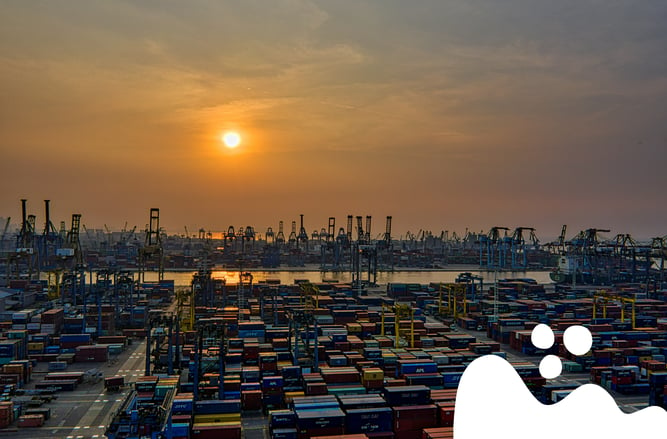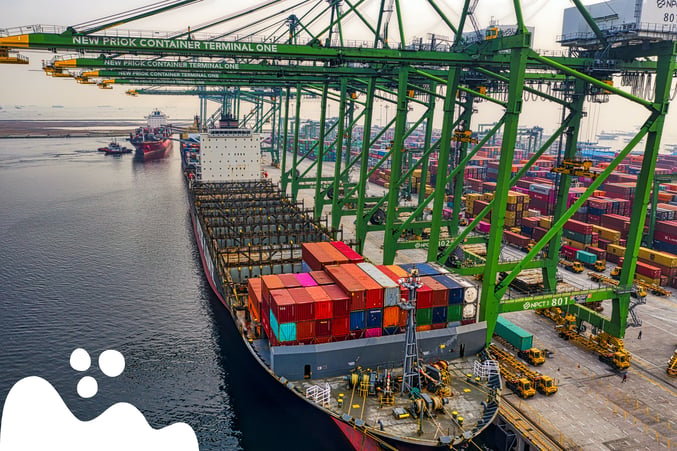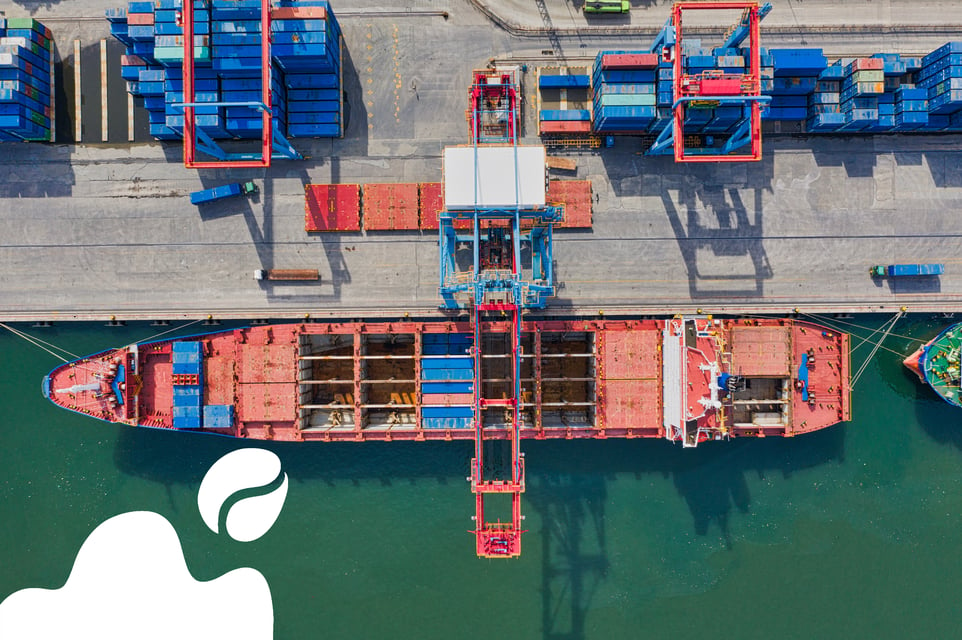
As we look ahead to the Summer of 2022, the unfortunate and unprecedented challenges we continue to experience with COVID-19, inflation, and Russia’s invasion of Ukraine, resume on the logistics front. The common frustration among coffee professionals is that we continue to have longer arrival times as well as higher costs, and not necessarily better coffee. But why?
David Palazuelos, one of our Relationship Coffee Managers, and Cora Coronel, our Coffee Operations Specialist, share some valuable insights into the current situation and how it impacts our industry.
As we mentioned in the last article, experts are speculating that the situation at ports does not have a short-term solution. One of the main reasons being the low availability of truckers—a systemic problem that won’t be easily solved. Younger generations are not seeking this specific career path, and older generations of truckers are retiring. Furthermore, weather conditions and events like hurricanes, fires, and typhoons are creating more and more volatility in this profession.
"In general, the situation is very convoluted and what might be true one day, is not necessarily still true the next day, which makes it extremely difficult to predict pricing and arrival times," says Cora - our operations specialist. In addition to last minute port cancellations, a decrease in reliable shipping lines on certain routes, and other complications, there's no shortage of logistic challenges, however, we remain optimistic and have a few suggestions to make things a little less stressful.
________________________________________________
Per an article from American Shipper: March is typically a strong month for trucking companies, as shippers start to stock their shelves in preparation for the summer. And late March normally gets a reliable end-of-quarter boost in volumes as shippers pump sales and reduce inventories. Though, this year, we have not seen that surge. In fact, March volumes were softer than at any point in 2021 (other than holidays).
That same article states that the lower volumes are due to a major consumer slowdown. Inflation that began in 2020, combined with the surge in fuel prices related to increased inflation and the Russian invasion of Ukraine, have made consumers move to the sidelines. What does this mean for the rest of 2022 you may ask? There are many reasons to believe that the freight market slowdown will continue, along with an oversupply of trucking capacity.

Year 2022 vs. 2021: Port Congestion In Comparison
Another difference from the last big COVID incident in China: Port congestions are a lot worse now. In May 2021, prior to last year’s Yantian District in China and its closure (due to COVID-19), there were about 19 container ships per day, on average, waiting for berths in Los Angeles and Long Beach. As of Monday, March 14th, there were 43 (including ships both inside and outside port waters). The better news is that this is less than half the record high of 109 ships waiting on Jan. 9. The bad news, according to the Sea-Intelligence, is that the drop was driven by fewer ship arrivals from Asia, a trend it says is about to sharply reverse.
Moreover, the existing competition for freight space is so aggressive that companies will need to pay unreasonably high premiums to get on planes and vessels and apply more flexible shipping methods to avoid delays.
Existing companies are building up inventories that diminished when the global economy locked down last spring. Meanwhile, consumers have shifted spending from services to things they can enjoy at home or outdoors while observing social distancing rules.
The National Retail Federation forecasts that container ports are expected to set monthly import records through June, after setting a record of 22 million vessels last year.
Over the last 7 months, shipping costs have tripled or even quadrupled from their historical levels, adding to the uncertainty of budget and price management.

What The Future of Logistics Look Like
According to many professionals in the logistics industry, the future will be defined by data, analyzed by artificial intelligence and driven by machines. Thus, automation could reshape its workforce. As we all know, labor is a critical element of any logistics operating model.
According to the Financial Times, automated solutions in the storage warehouses are already being implemented and their level of sophistication is increasing. For example, automated loading and unloading systems are already available, but in the future these are likely to be able to bypass obstacles and adjust routes automatically like trailer loading and unloading at acceptable speeds. Package delivery could also make more use of automation, through innovations like autonomous vehicles or delivery drones. Companies like Google have already started working on self-driving lockers and the trucking industry is partnering with OEMs on partially automated truck convoys. Even if more radical solutions are a long time coming, other technologies which could make drivers more efficient are in the offing too, like augmented reality solutions that give drivers more information about their environment and the packages still on board.
According to another article on logistics trends, we will also start seeing the implementation of innovative solutions like blockchain technology. Blockchain is a distributed, encrypted computer filing system designed to allow real-time, free from tampered records. In addition to bringing transparency to the entire logistics process, blockchain also makes it easy to use smart contracts when automating commercial processes. Blockchain’s system enables companies to trace and track a product from when it leaves its place of origin until it reaches the customer. The system records all the relevant supply chain information in a database that executes smart contracts after certain conditions are met. An example of these conditions includes confirmation of a successful delivery from the driver or overall fulfillment. Blockchain will indeed enable smarter logistics. For instance, there will be a connected pallet that will transmit the goods’ condition and the delivery and confirmation time during delivery. It will also verify whether the goods are delivered according to the agreed requirements and release the payment.
________________________________________________
Our Responsibility to You
We will keep doing our best and operating like we've been doing for the past year by increasing our lead time for upcoming shipments from 2-3 months before the delivery date to 3-4 months; assisting our staff at origin, as well as our suppliers, to find alternatives when issues arise; permanently monitoring shipments and issues around them, and keeping our customers informed about any unexpected problems.
Our most significant suggestion for our customers is to continue placing orders as early as possible and to stay in constant communication with your Relationship Coffee Manager. We have greatly appreciated your patience as we all continue to navigate these unpredictable and often uncontrollable events.
We truly believe our industry is resilient and that things will indeed get better. But we must remember that the way our supply chain operates is changing. These changes are having a global impact on the economy, on how purchasing and sales are conducted, and on pricing in the supply chain. We must work together to navigate these difficulties as a united industry.
Again, if you have any specific questions, please don’t hesitate to reach out!



.png)
